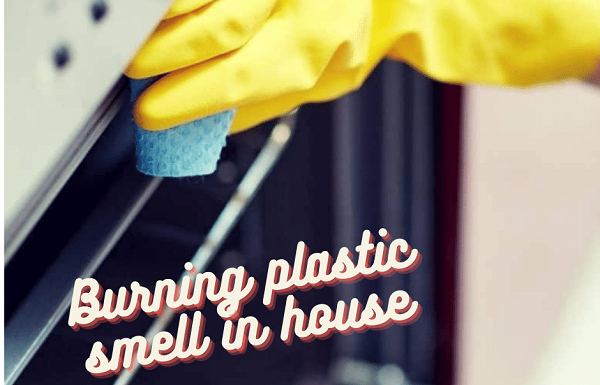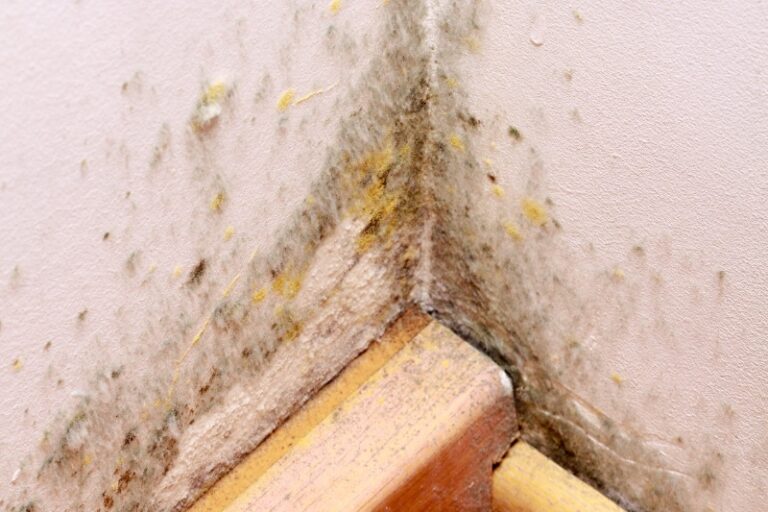Smell Of Burning Plastic In House

Decoding the Acrid Air: Why Does My House Smell Like Burning Plastic?
That unmistakable, acrid smell of burning plastic wafting through your home is never a good sign. While it might be tempting to dismiss it as something burning on the stove (and you should definitely check!), if the odor persists, especially near your HVAC system, it’s crucial to investigate. This smell often indicates a problem that, if left unaddressed, can lead to serious damage or even a fire hazard. This guide will help you diagnose the potential causes of a burning plastic smell related to your HVAC system and outline the steps you should take to resolve the issue. We’ll also explore preventive measures and discuss when it’s absolutely necessary to call in a professional.
Potential Culprits: HVAC System Components and the Burning Plastic Smell
Several components within your HVAC system can produce a burning plastic smell when malfunctioning. Understanding these potential causes is the first step in identifying the problem.
- Overheated Motor: The electric motors in your furnace, air conditioner, or heat pump are susceptible to overheating. As they strain to operate, especially with restricted airflow, the motor windings and insulation can overheat and emit a distinct burning plastic odor. This is a common cause, particularly in older units.
- Faulty Wiring: Loose, frayed, or damaged wiring within the HVAC system is a significant fire hazard. As wires short circuit or arc, they can melt insulation and plastic components, producing a strong burning smell. This is a serious issue that demands immediate attention.
- Melting Plastic Components: Some HVAC components, like fan blades, control panels, and even parts within the furnace itself, are made of plastic. Overheating or direct contact with a heat source can cause these parts to melt, resulting in the characteristic burning plastic smell.
- Burning Dust and Debris: While not *exactly* burning plastic, accumulated dust, dirt, and debris on heating elements can scorch and produce a similar acrid odor. This is more common in furnaces at the beginning of the heating season.
- Failed Capacitor: Capacitors provide the initial surge of power to start motors in air conditioners and heat pumps. When a capacitor fails, it can release a burning smell, often described as a combination of plastic and electrical odor.
- Electrical Resistance Heater Malfunction: Electric furnaces or heat pumps with electric resistance backup heat can generate a burning smell if the resistance coils overheat or if dust/debris accumulates on them.
Step-by-Step Troubleshooting: What to Do When You Smell Burning Plastic
Before calling a professional, you can take some initial steps to troubleshoot the problem. Remember to always prioritize safety! Turn off the power to your HVAC system at the breaker box before inspecting any components.
- Isolate the Source: Try to pinpoint where the smell is strongest. Is it coming from the furnace, the air conditioner, or a specific vent? This will help narrow down the potential source.
- Check the Air Filter: A clogged air filter restricts airflow, forcing the system to work harder and potentially causing components to overheat. Replace a dirty filter immediately. Look for filters with a high MERV rating, between 8 and 13, for optimal filtration without restricting airflow too much.
- Inspect Visible Wiring: With the power OFF, visually inspect any accessible wiring near the HVAC unit. Look for signs of fraying, melting, or discoloration. If you see any damage, do NOT attempt to repair it yourself; call a qualified electrician or HVAC technician.
- Examine the Blower Motor: Again, with the power OFF, try to access the blower motor. Look for signs of overheating, such as discoloration or melted plastic. Smell around the motor to see if the burning smell is strongest there.
- Listen for Unusual Noises: Pay attention to any unusual noises coming from your HVAC system. Grinding, squealing, or clicking sounds can indicate a failing motor or other mechanical problems.
- Check the Outside Unit (if applicable): If the smell seems to be originating from your air conditioner or heat pump's outdoor unit, inspect it for debris buildup around the fan and coils.
When to Call a Professional: Don't Hesitate to Seek Expert Help
While some issues, like a dirty air filter, are easily addressed, other problems require the expertise of a qualified HVAC technician. You should always call a professional if:
- You are uncomfortable working with electrical components.
- You suspect a wiring problem.
- You are unable to identify the source of the smell.
- The smell persists after you've tried basic troubleshooting.
- You see any signs of smoke or fire.
Preventive Maintenance: Keeping the Burning Plastic Smell at Bay
Regular maintenance is key to preventing many HVAC problems, including those that can cause a burning plastic smell. Here are some essential maintenance tasks:
- Regular Air Filter Replacement: Replace your air filter every 1-3 months, depending on the type of filter and your home's air quality.
- Annual HVAC Tune-Up: Schedule an annual tune-up with a qualified HVAC technician. They will inspect your system, clean the components, and identify potential problems before they become major issues.
- Clear Debris Around Outdoor Unit: Keep the area around your air conditioner or heat pump's outdoor unit free of debris, such as leaves, grass clippings, and weeds.
- Inspect Ductwork: Periodically inspect your ductwork for leaks or damage. Leaky ducts can reduce efficiency and cause the system to work harder, potentially leading to overheating.
Choosing a New HVAC System: Features, Brands, and Considerations
If your HVAC system is old or frequently experiencing problems, it might be time to consider a replacement. When choosing a new system, consider the following factors:
- System Type: Furnace, air conditioner, heat pump, or ductless mini-split? The best choice depends on your climate, budget, and energy needs.
- Efficiency Ratings: Look for high AFUE (Annual Fuel Utilization Efficiency) ratings for furnaces, high SEER (Seasonal Energy Efficiency Ratio) ratings for air conditioners, and high HSPF (Heating Seasonal Performance Factor) ratings for heat pumps. Higher ratings mean lower energy bills.
- Size: Choosing the right size HVAC system is crucial for efficiency and comfort. An oversized system will cycle on and off frequently, while an undersized system will struggle to maintain the desired temperature. An HVAC professional can perform a load calculation to determine the appropriate size for your home.
- Brand Reputation: Research different HVAC brands and read reviews to get an idea of their reliability and performance. Some popular brands include Carrier, Trane, Lennox, Rheem, and Goodman. Each brand offers a range of models with different features and price points. For example, Carrier often leads in innovation, offering models with advanced features like variable-speed blowers and smart controls, while Goodman is often favored for its affordability.
- Warranty: Pay attention to the warranty offered by the manufacturer. A longer warranty provides greater peace of mind and protection against unexpected repairs. Standard warranties typically cover parts for 5-10 years, while some manufacturers offer extended warranties with registration.
- Features: Consider features such as variable-speed blowers, smart thermostats, and zoning systems, which can improve comfort and energy efficiency.
Comparing HVAC Brands and Models: A Quick Look
Here's a brief comparison of some popular HVAC brands and their typical offerings:
| Brand | Key Features | Typical AFUE (Furnaces) | Typical SEER (ACs) | Typical HSPF (Heat Pumps) | Price Range |
|---|---|---|---|---|---|
| Carrier | High efficiency, advanced technology, smart controls | 80-98.5% | 13-26 | 8.5-13 | High |
| Trane | Durable construction, reliable performance | 80-97% | 13-22 | 8.2-10 | High |
| Lennox | Energy efficient, quiet operation | 80-99% | 13-28 | 8.2-10 | High |
| Rheem | Good value, wide range of options | 80-96% | 13-20 | 8.0-10 | Mid-Range |
| Goodman | Affordable, reliable basic performance | 80-96% | 13-18 | 8.0-9 | Low |
Note: These are general ranges and specific models may vary. Always check the manufacturer's specifications for the most accurate information.
Understanding HVAC Warranties and Maintenance Needs
A good warranty is essential for protecting your investment in a new HVAC system. Be sure to read the warranty carefully and understand what is covered and what is not. Most warranties require regular maintenance to remain valid, so be sure to schedule annual tune-ups with a qualified technician.
Beyond the warranty, regular maintenance is crucial for ensuring the long-term performance and efficiency of your HVAC system. Neglecting maintenance can lead to costly repairs and shorten the lifespan of your equipment.
Conclusion: Addressing the Burning Plastic Smell and Ensuring a Safe Home
The smell of burning plastic in your home should never be ignored. By understanding the potential causes, taking prompt action, and investing in preventive maintenance, you can protect your home and family from potential hazards and ensure that your HVAC system operates safely and efficiently for years to come. Remember, when in doubt, always consult with a qualified HVAC professional.










